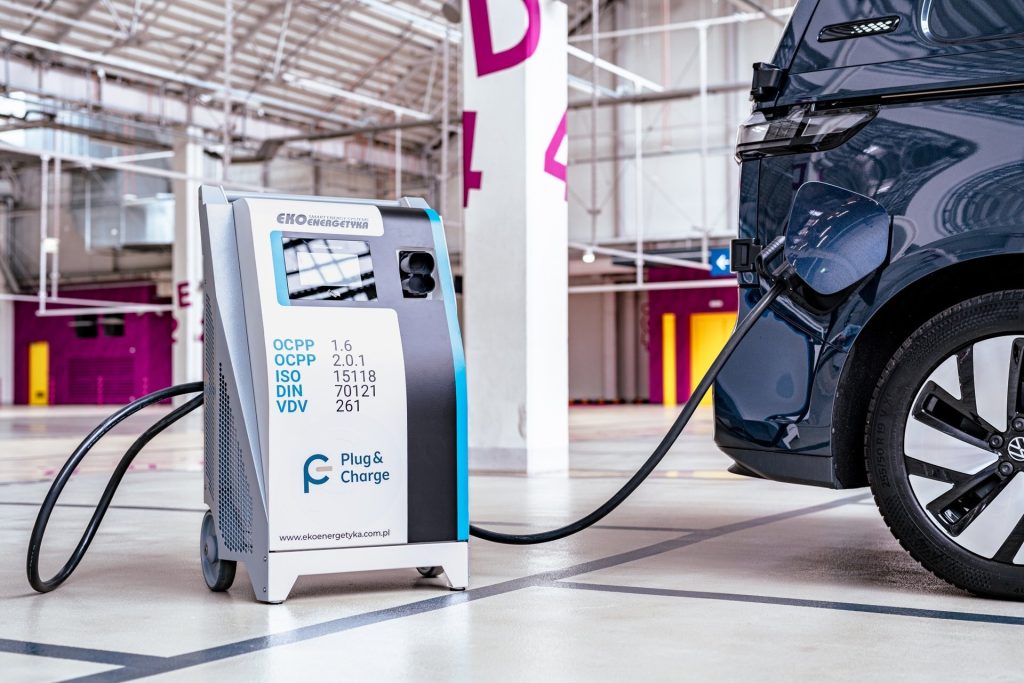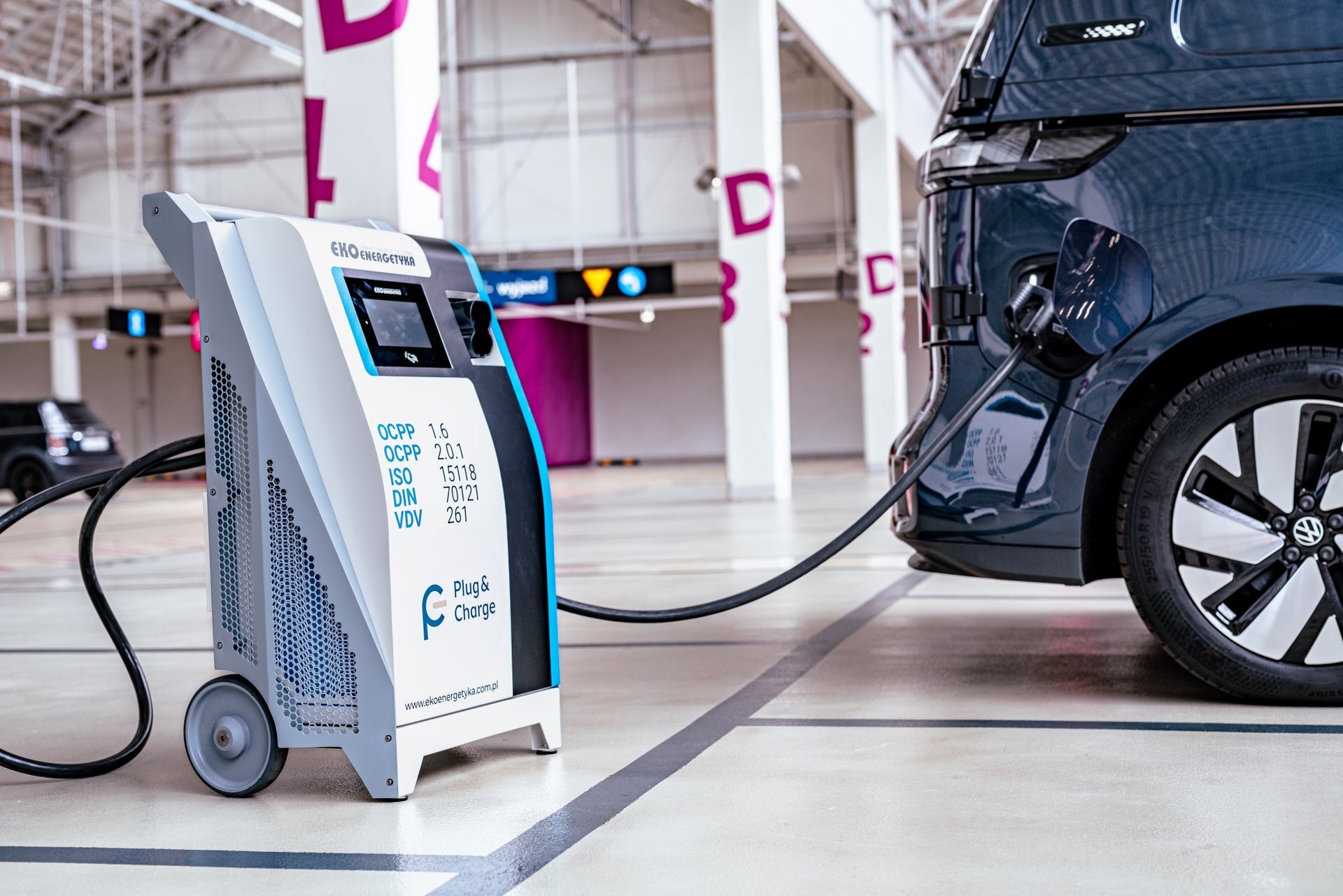When comparing EV charging options, one factor stands above all others: speed. While Level 2 charging steadily adds 40-60 kilometers of range each hour, Level 3 systems can pump up to 300 kilometers of range into your vehicle in just half an hour. Level 3 charging fundamentally transforms how we think about electric vehicle charging and, by extension, how these cars fit into our daily lives, whether for commuting, road trips, or anything in between.
The implications of choosing between Level 2 and Level 3 charging stretch far beyond mere charging times. This choice influences everything: installation requirements, costs, and practical daily use. Level 2 chargers, connecting to standard 230/400V power, represent the more accessible option. Level 3 systems, though requiring specialized high-voltage infrastructure and commanding premium prices, deliver unmatched charging speeds that can rival traditional refueling times.
What is Level 2 Charging?
Level 2 charging delivers AC power at 7 to 22 kW. This straightforward system, operating through a standard charging connection, is faster than level 1 charging and serves as the primary solution for residential and private EV charging needs.
Cars typically spend 4-8 hours connected to these chargers to go from near-empty to full – a timeframe that aligns perfectly with typical parking patterns at homes and workplaces.
The beauty of Level 2 lies in its accessibility. These chargers tap into the same type of power that runs everyday appliances, making installation relatively straightforward and cost-effective. No wonder they've emerged as the go-to electric car charging solution for homes, offices, and public parking facilities where vehicles naturally spend several hours parked.
However, it's not the fastest option. When traveling or on the road, where extended stops aren't practical, a faster charging solution is essential to minimize downtime and keep journeys efficient.
What is Level 3 Charging?
Level 3 charging changes everything. By delivering DC power straight to the vehicle's battery, bypassing the car's onboard charger completely, these fast charging systems achieve charging speeds that early EV adopters could only dream about.
Current Level 3 chargers pack a punch – anywhere from 50 to an astonishing 350 kW of power delivery capability, dwarfing even the most powerful Level 2 systems by orders of magnitude.
Such advanced systems represent the cutting edge of charging technology, featuring smart systems and high-voltage capabilities that enable ultra-fast charging. Their ability to charge an EV battery from near-empty to 80% in roughly the time it takes to grab a coffee has revolutionized electric vehicle capabilities, making long-distance travel as convenient as traditional refueling.
For businesses along major travel routes, public Level 3 charging stations offer an opportunity to serve the growing number of EV drivers who need rapid charging solutions.
Key Differences Between Level 2 and Level 3 Charging

Should you choose Level 2 or Level 3? While both will charge your car, they're as different as a garden hose and a fire hydrant. These differences shape not just charging times but also where and how we can deploy charging infrastructure.
Speed & Use Cases
Want to know exactly what these charging levels mean for your schedule? Let's break down real-world charging scenarios when using level 2 and level 3 chargers:
30-Minute Charging Session:
- Level 2: Adds 20-30 kilometers of range
- Level 3: Adds up to 300 kilometers of range
Lunch Break (1 Hour):
- Level 2: Adds 40-60 kilometers of range
- Level 3: Can fully charge most EVs
Shopping Trip (2 Hours):
- Level 2: Adds 80-120 kilometers of range
- Level 3: Full charge with time to spare
Workday (8 Hours):
- Level 2: Full charge for an EV
- Level 3: Multiple vehicles can be charged
The speed difference shapes how each level serves different needs. Level 2 stations excel at destination charging, perfect for those long stops where your car would be parked anyway. Level 3 stations enable quick pit stops and truly long-distance EV travel.
Cost and Infrastructure Requirements
The investment in charging infrastructure reflects the different capabilities and use cases of each charging level. Let's examine what's involved in both options.
Level 2 charging represents the accessible entry point to EV charging infrastructure. Base units cost €500-2,000, with installation adding €1,000-3,000 depending on site conditions. These systems require only standard 400V three-phase power, making the installation straightforward and predictable. Public charging rates typically run €0.30-0.50 per kilowatt-hour, offering stable operating costs.
Level 3 systems deliver premium charging capabilities, with 50 kW units starting at €20,000 and advanced 350 kW systems reaching €150,000. While the investment is substantial, many businesses leverage government incentives covering up to 40% of total costs. Operating costs range from €0.50-0.79 per kilowatt-hour, reflecting the sophisticated technology that enables ultra-rapid charging capabilities. The dramatic reduction in charging time makes these stations particularly attractive for commercial applications and travel corridors.
Availability
Level 2 charging stations appear in many convenient everyday locations thanks to their flexible installation requirements. You'll typically find them in:
- City centers and shopping areas
- Office buildings
- Hotels and restaurants
- Public parking structures
- Residential complexes
Level 3 public charging stations strategically position themselves where rapid charging matters most. Look for them:
- Along major highways
- At modern service stations
- Near highway exits
- At major transport hubs
- In dedicated charging parks
With popular apps like ChargeMap, PlugShare, or EnBW mobility+ finding the closest charging station is easy. These apps show real-time availability, charging speeds, and supported connector types. Many vehicle manufacturers also offer their own navigation systems with built-in charging station locators.
For the most comprehensive coverage, consider using ABRP (A Better Route Planner) for longer journey planning – it factors in charging stops based on your specific vehicle model and preferred charging networks.
Which Charging Option is Right for You?
Level 2 charging offers a basic but functional approach to daily charging needs. If you have access to charging at home or work, this option can handle typical daily use. The average daily commute spans 30-50 kilometers - which a Level 2 charger can replenish during your workday or overnight parking.
Level 3 charging represents the pinnacle of EV charging technology. These advanced systems deliver an experience that rivals traditional refueling, making them perfect for everything from cross-country travel to premium fleet operations. The ability to add hundreds of kilometers of range during a quick coffee break transforms EV travel into an entirely different experience. It also offers you maximum flexibility in how you use your EV.
The ideal strategy? Combine both charging levels. Use Level 2 for basic daily charging at home or work, then enjoy the convenience and power of Level 3 stations for rapid charging when time matters. This approach lets you benefit from Level 3's superior capabilities while maintaining the practicality of Level 2 charging for routine needs.
Wrapping Up
The choice between Level 2 and Level 3 charging isn't really a choice at all – they serve different purposes, filling different needs in the EV charging ecosystem. Level 2 handles the daily charging needs of most EV owners efficiently and economically. Level 3 makes long-distance travel practical and provides a fast-charging option when needed.
Smart EV ownership often means leveraging both: relying on cost-effective Level 2 charging for everyday needs while having access to Level 3 charging for those occasions when time matters most.
Ready to explore the right charging solution for your needs? Contact our experts at Ekoenergetyka to discover our comprehensive range of charging systems.
